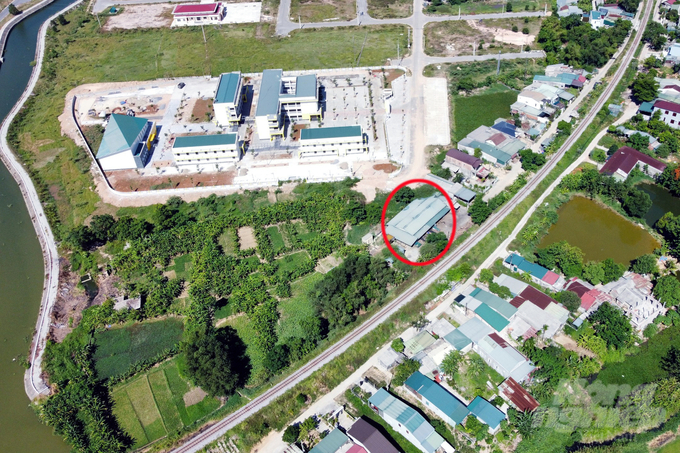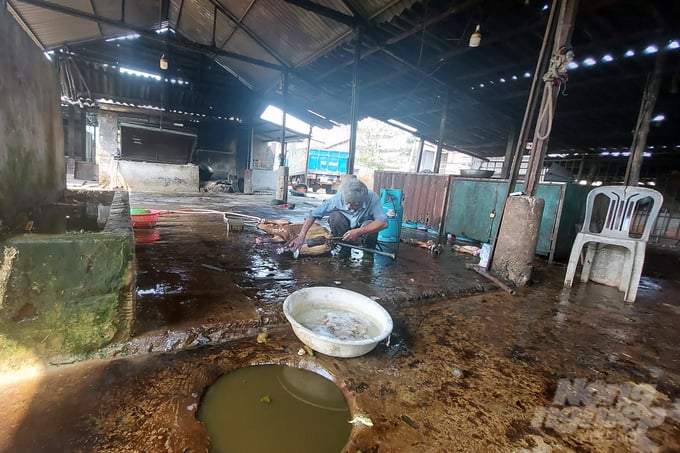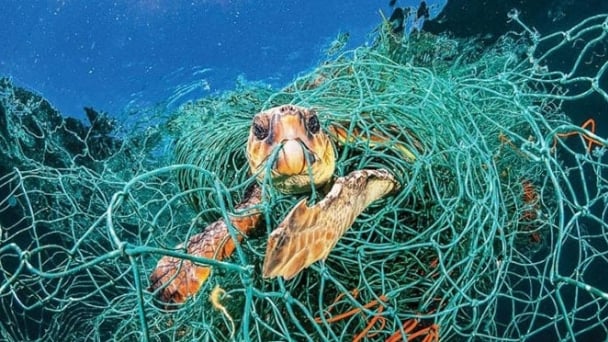June 16, 2025 | 16:21 GMT +7
June 16, 2025 | 16:21 GMT +7
Hotline: 0913.378.918
June 16, 2025 | 16:21 GMT +7
Hotline: 0913.378.918
Dong Ha city currently has 2 centralized slaughterhouses in Ward 1 and Dong Luong ward. Among them, the facility in Ward 1 was built and put into operation in 1997. There are also 3 poultry slaughterhouses in Ward 1 specifically Tay Tri neighborhood and the second street, with 12 households participating. The average slaughter capacity is roughly 730 heads/day.
The facility in Dong Luong ward was built and put into operation in 1999 in an area of 500 square meters. There are currently 6 householders slaughtering pigs and 8 householders slaughtering buffaloes and cows. Both of the facilities were built synchronously but are now located in residential areas. The waste treatment pit is small and degraded, causing serious environmental pollution.

Built and put into operation nearly 30 years ago, the centralized slaughterhouse in Ward 1 is now located in the middle of a residential area, close to a school. Photo: Vo Dung.
To temporarily reduce pressure on the local environment, Dong Ha City People's Committee has demanded the facility in Ward 1 to transfer 50% of its capacity to the centralized slaughterhouse in Dong Luong ward, promptly clean up waste and ensure hygiene. This causes difficulties for households that slaughter cattle, and the slaughterhouse in Dong Luong ward is also overloaded.
According to Thai Van Dinh, Head of the Management Board of Ward 1 Centralized Slaughterhouse, households working at the slaughterhouse here are looking forward to the large-scale facility which is invested and built by the city People's Committee so that they no longer have to split up and work in 2 places. “Although there are plans and investment policies in place, it is unclear why construction has not yet been implemented. We don’t even know when the new facility will be completed so we can move there”.

Most of the centralized slaughterhouses in Quang Tri have degraded. Photo: Vo Dung.
In the case of Cam Lo district, this locality has had 3 centralized slaughterhouses planned, built and put into operation in Thanh An, Cam Chinh communes and Cam Lo town. These slaughterhouses have a capacity of 10 - 30 heads/day.
Apart from the facility in Cam Lo town, other centralized slaughterhouses were built a long time ago so their infrastructure has deteriorated.
Items such as floors, waste treatment pits and drainage ditches operate ineffectively. The location is no longer in accordance with regulations. The slaughtering equipment, storage, waste treatment system do not meet standards for veterinary hygiene, food safety, and environmental sanitation.
Statistics from Quang Tri Department of Agriculture and Rural Development show that the whole province currently has 12 centralized slaughterhouses and 133 small slaughterhouses. Among them, only 3 facilities have been newly built since 2018. The remaining 9 slaughterhouses were built and put into operation from 1996 to pre-2018. Most of them are degraded, lacking in area for operation and slaughter capacity to meet the requirement to convert small slaughterhouses in the area into a centralized slaughterhouse.
Facilities serving operations at the 9 centralized slaughterhouses are seriously degraded. The slaughtering is done right on the cement floor. Most slaughterhouses do not have separate meat processing and byproduct processing areas. The water treatment system is neglected. Small slaughterhouses are scattered and dispersed in residential areas. Households mainly take advantage of a part of the family's living area to carry out slaughtering, so the area is not guaranteed.
Translated by Samuel Pham

(VAN) The working delegation from the Ministry of Agriculture and Environment conducted an important trip to the Netherlands to strengthen strategic partnerships and sustainable development in the agricultural sector.

(VAN) The letter ‘A Plea from the Ocean’ not only evokes emotion but also awakens the human conscience to the responsibility of protecting life on Earth.

(VAN) The Department of Agriculture in South Africa has announced the country’s first mass vaccination of poultry to prevent local birds from contracting avian influenza.

(VAN) Establishment of the Mekong Delta Regional Agricultural Linkage Center, aiming for a closed value chain, deep processing, trading platforms, and international market connectivity.

(VAN) Gia Lai province has recently recorded 460 rare species of animals and plants, contributing to forest conservation and biodiversity planning in the region.

(VAN) Ms. Caroline Beresford, New Zealand Ambassador to Vietnam, expressed confidence that agricultural cooperation between Vietnam and New Zealand will develop sustainably, be climate-resilient, and promote gender equality.

(VAN) Vietnam reaffirms its commitment to international cooperation in fostering sustainable and responsible fisheries while ensuring resilient livelihoods for small-scale fishing communities.